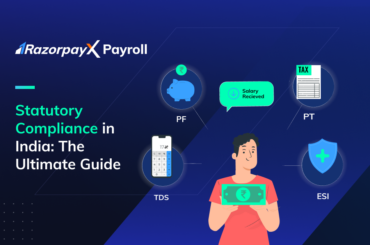Table of Contents
What is Leave Encashment?
Leave encashment is the amount of money an employee receives from an employer for their unutilised leaves. According to this policy, the employer is responsible for clearing the employee’s dues for the services provided via cash or adjusting these in the leaves quota for the next calendar year.
An employee’s leave encashment is included in the full and final settlement the company performs upon their resignation or termination.
The leave encashment policy differs from company to company, and the rules vary. Some companies usually pay for the leaves taken, or some adjust them in the next calendar year. However, the amount of unavailed leaves and bonuses must be settled by the 7th or 10th of the following month after resignation, according to the 1948 Factories Act.
Types of Leaves
To encash your leaves, you need to know the types of leaves, and which of them can be encashed. Here are different types of leaves:
| Leave Type | Description | Eligibility for Encashment |
|---|---|---|
| Casual Leave | Commonly used leave with a duration of 7 to 10 days. Must inform employer for encashment. | Eligible |
| Privilege Leave | Requires prior notice and varies by organization. Eligible for encashment after a period. | Eligibility varies |
| Medical Leave | For health conditions, requires employer notice. Eligible for encashment, but not long-term. | Eligible (Excluding long-term) |
| Sabbaticals | For upskilling, paid and reimbursed by the organization. Eligible for encashment. | Eligible |
| Holiday Leaves | Paid leaves, no salary deduction. Eligible for encashment. | Eligible |
| Maternity Leave | Available to pregnant employees, varies in duration. Not eligible for encashment. | Not eligible |
Is Leave Encashment Taxable?
Any leave is available for encashment during service or at the time of retirement, or when a person resigns. When encashed during the service period, it is fully taxable and is a part of the income from salary. However, one can claim some relief under Section 89 of the Income Tax Act.
Conditions of Exemption
When any leave is encashed at retirement or resignation, one can avail of certain partial and complete exemptions. The conditions for exemption are:
- For employees of the Central or State Government, the leave encashment is exempted from taxation.
- Leaves are fully exempted when any legal heir has received the encashment on behalf of a deceased employee.
- In the case of government employees, leave encashment is exempt based on the computation provided in Section 10 (10AA) ii, which includes the balance of taxable income from salary, if any.
Leave Encashment Calculation
To understand how the leave encashment is calculated, here is an example:
Mrs Shanaya is retiring after 20 years of service. She was entitled to 25 days of paid leave per annum from her company, meaning she had 500 days of leave during her entire service to the company.
Out of this, Mrs Shanaya has already utilised 150 days of paid leave. She is left with 350 days of unutilised leave.
Now, as for her salary, she is drawing a basic salary plus a dearness allowance (DA) of Rs 35,000 per month at the time of retirement.
Now, leave encashment is calculated based on the number of unutilised leaves multiplied by salary per day, which would be calculated as:
Salary per day = 35,000/30 = Rs. 1167 (approx)
Leave encashment received = 350*1167 = 4,08,450
Thus, Mrs Shanaya received an amount of Rs 4,08,450 as leave encashment.
| Particulars | Amount in Rs |
| Leave encashment received | 4,08,450 |
| Tax exemption: least of the following
1. Amount notified by the government 2. Actual leave encashment 3. Average salary for 10 months (35000*10) 4. One day salary multiplied by (30* completed years of service minus unutilised days of leave i.e.,= 1167* (30*20 – 150) |
3,00,000 4,08,450 3,50, 000 5,25,150 |
| Exemption (Leave encashment received minus 3,00,000 (since it’s the least of the above i.e., Rs. 4,08,450 – Rs. 3,00,000) | 1,08,450 |
| Leave encashment taxable as ‘income from salary’ | 1,08,450 |
Automated Leave Encashment Calculation
The longer an employee works for a company, the more complex the calculations for leave encashment become. Leave all the tedious calculation work to RazorpayX Payroll and focus on what you do the best – managing your business!
Read more:
FAQs
1. Are leave salary and leave encashment the same?
Leave salary, which is accumulated over time and encashed later, is leave encashment. Leave salary is, thus, a part of leave encashment.
2. Is leave encashment taxable?
Yes, leave encashment is taxable. However, the taxation conditions differ in the sector one is employed in and the terms and conditions set by the employer.
3. How is leave encashment calculated?
Leave encashment is calculated with the following formula. = [(Basic Salary + Dearness Allowance) / 30] * No of EL Here, EL= Earned leave. Read more details in the example provided in the blog.





